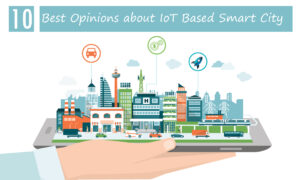Whether you are moving to a new home or looking to change your current provider, you need to know the ins and outs of the internet industry to make the right choice at the right time. For starters, there are several internet connection types in the market at present, each of which has multiple providers offering hundreds of plans.
If you haven’t shopped for the internet before, then this variety may easily put you under a spell of confusion, wasting your time, energy, and resources. So, how can you make sense out of the noise? How can you compare the connection types accurately? And, most importantly, how can you reach the best possible verdict?
This post will serve as your guide in this process; shedding light on the top internet connection types one by one and helping you finalize the most suitable type for your home. Let’s dive in.
Cable Internet
“Cable internet is a common connection type, which is available to 90% of the U.S. population. It leverages the existing television wiring in a community to transmit broadband to people’s homes. ”
The data travels in the form of radiofrequency signals through a network of copper coaxial cables, which withstand weather interferences and offer a strong reception. Cable internet employs the latest DOCSIS 3.1 technology to deliver faster download speeds, starting from 100 Mbps and going all the way up to 1 Gig, depending on the hybridity of the network.
One of the top cable internet providers in the market is cox internet, which offers high-speed cable internet to its subscribers through an HFC or Hybrid Fiber-Coaxial system with a ‘last mile’ coaxial line. Here are the merits and demerits of cable:
|
Merits |
Demerits |
|
|
DSL Internet
DSL stands for ‘Digital Subscriber Line’ and is a type of internet connection that leverages the existing telephone wiring in a community to transmit broadband to people’s homes.
Like cable, it has a 90% presence in America, with a sharp focus on the low-lying suburbs. DSL is a descendent of the ancient dial-up network, but it uses a frequency that allows a simultaneous transference of bandwidth and audio data through the copper cables. Meaning, you can call and surf the internet at the same time.
The latest iteration of DSL is VDSL (very-high-bit-rate digital subscriber line) which delivers home internet, HDTV, and phone in an integrated manner on a single line. AT&T Internet is one of the best DSL providers in the market, with an American Customer Satisfaction Index rating of 68/100 and a download speed climbing up to 100 Mbps, meeting cable head-on. Here are the pros and cons of DSL internet:
| Merits | Demerits |
|
|
Fibre-Optic Internet
Fibre-optic internet is the gold standard in the whole market as of now. Instead of radio frequencies and copper infrastructures, this internet connection type uses ultra-sophisticated glass-based wires, known as fibre-optics, to deliver broadband signals in the form of ultra-fast light pulses to people’s homes.
Because of its state-of-the-art technology and a complex installation process, fibre internet is not yet available on a massive scale and has a mere 32% presence in all of America. Verizon Fios is a top-performing fibre internet provider with plans starting at $39.99/month for speeds that exceed 1 Gig. Here is an overview of fiber:
| Merits | Demerits |
|
|
Satellite Internet
Satellite internet is the best connection type for rural residents who can’t get access to cable or fibre networks. It works like this: A satellite provider transmits broadband signals to an orbiting satellite in the outer space, which in turn, beams them directly to a satellite dish mounted on the rooftop of a subscriber’s home.
Signals from the satellite dish travel to a receiver, which converts them into usable data for the connected devices in the area. All in all, satellite internet has 100% availability in the US, and its top two providers, HughesNet & ViaSat, are working on delivering 25 Mbps+ speeds to all homes in its coverage area. Here are the pros and cons of satellite internet:
| Merits | Demerits |
|
|










